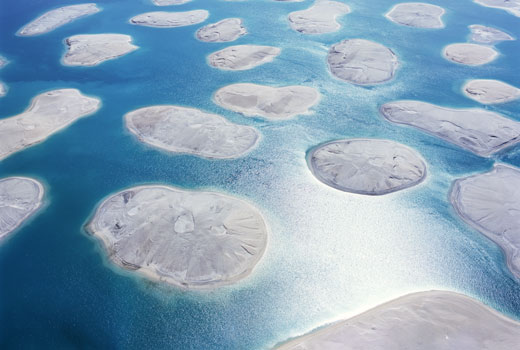

 Is Dubai the city of the future, or the condensation of the worst developments of the past decennia; is it a fantasy, or is it all just fake; is it a dream, or actually a nightmare, is it a utopia, or just an investment enterprise…?
Is Dubai the city of the future, or the condensation of the worst developments of the past decennia; is it a fantasy, or is it all just fake; is it a dream, or actually a nightmare, is it a utopia, or just an investment enterprise…?Last Tuesday, 13th of March 2007, George Katodrytis and Kees Christiaanse duelled with each other in the Berlage Institute in Rotterdam about the question whether the developments in the city of Dubai are positive or negative. Like a stroboscope they portrayed the city alternately as illuminated and dark, white and black.
Architecture critic Roemer van Toorn was our host that evening. The Dialogue lecture series this semester is part of the Architecture Biennale (theme: ‘Power’) that is organized by the Berlage Institute this summer in Rotterdam. Unfortunately the third speaker of the Dialogue, Marc Angélil, couldn’t make it by airplane from Zurich because of a fog obscuring the runway.
Van Toorn started off by quoting critical comments by Mike Davis on Dubai, on the internet, and celebrating comments by Rem Koolhaas/AMO, that he made on the last Venice Biennale. “Dubai becomes a single experience, instead of multiple experiences”, Koolhaas notes. Van Toorn also showed a short film about Dubai Waterfront, which hilariously features Winy Maas of MVRDV designing beaches.
George Katodrytis worked for six years in the city of Dubai and has clearly given more lectures like this. In staccato the astonishing facts and figures pass by. Dubai is a constructed fantasy; he starts. “It is a success-story, for the good reasons or the bad.” Rome was the classic city, New York was the city of the 20th century, and now Dubai will be the city of the 21st century.
Curiously, Katodrytis continuous, the most critique on Dubai comes form the outside, not from the inside. The critique is even more curious, as Dubai is really a Western idea.
A 2-d algorithm that is designed to maximize and optimize its perimeter takes the same shape as the waterfront development in Dubai, Katodrytis argues. The Palm is the only neighborhood on earth you can actually recognize from satellite, although – if you go there – not much is going on. The total waterfront-development of Dubai measures twice the size of Manhattan. Beyond bigness, I would suggest, towards hugeness.
If you compare the public spaces of Manhattan and Dubai, one finds that there is none in the latter. Public space seems like something of the past.
The first palm-island (actually a peninsula), Palm Jumeirah, will open within the next couple of weeks, and illustrates that Dubai in the first place is a real-estate project. Images show ‘fronts’ that are congested by enormous villas, almost shoulder on shoulder exploiting the waterfront every meter. Dubai is about selling something exclusive, but not that exclusive that not a lot of people can own a property there. Luxury becomes a commodity.
The island-conglomeration ‘The World’ is both the most primitive property – an island, and, because of that, also the most exclusive one. It presupposes that you own your private airplane/helicopter, or boat. Katodrytis sums up the features of the islands: a primitive, iconic form, pure cumulative sand-mass, security, and the ceremony of arriving/leaving. Some of the islands have been sold for more than 150 million dollars. ‘You can do there whatever you want’, the advertising video says. Ultimate freedom is for sale.
Article Source: www.eikongraphia.com/



No comments:
Post a Comment